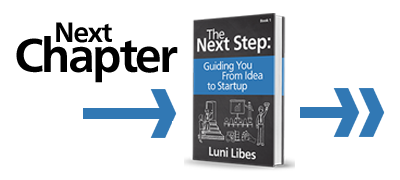With great problems come great solutions!
Your idea may have been an epiphany or something you have been thinking about for years. It may be simple and obvious to anyone you share it with or exceedingly complicated and difficult to describe. No matter where your idea sprang from, you need to be able to share it with others and do this within ten minutes, five minutes, one minute, and, at times, one sentence.
To start with, work on a ten-minute summary. In those ten minutes, describe the problem being solved, describe the type of person who has this problem (a.k.a. the customer), and give a brief overview of your solution, without all the details.
QUESTION 14:
Can I describe the problem, customer, and solution in ten minutes or less? Without a single word of jargon?
In this process, throw away as much of the jargon as possible, ideally all of it. Create one or two diagrams that can be used to explain how the underlying solution works. But keep this at a high-level. Your goal is to explain the concepts to people who are outside your area of expertise. You will have plenty of opportunities to “go deep” into the details later, but at first, you will likely have ten minutes or less and thus no time for the details.
Once you are comfortable with the ten-minute version, work on telling that story in five minutes. You will not be able to include the same amount of detail. Only include the most important facts. Then repeat the process for two minutes, one minute, one paragraph, and one sentence. Each time, cut out anything that is not crucial to the description.
Below are one-minute paragraphs from the four example businesses:
Bird Watch—[The solution]: It is time consuming and difficult to measure wildlife in the wild. Bird Watch is a technology solution that uses ultra-low powered radios, embedded into thumbnail-sized “tags,” plus a set of battery-operated “base stations” that are deployed within the measurement area. The tags are small enough to be attached to the animals and sufficiently low-cost so as to be disposable. The base stations are tied to trees or staked into the ground. Base stations store the tag identifier and timestamp, along with all the data captured by the tags, whenever the tags get within range. Tags can monitor movement, temperature, and pressure. As a system, the location and movement of a large number of wild animals can be monitored twenty-four hours per day, seven days per week, without the need of visiting the site more than twice (once to set up the base stations and tag the animals, and again at the end of the research period to collect the base stations).
Concrete Battery—[The solution]: Electricity consumers demand a continuous, steady supply of electricity. But alternative /green electricity technologies such as wind and solar provide a discontinuous, unsteady source of electricity. Concrete Battery provides a low-cost, flywheel-based solution to store excess electricity during times of excess generation and to release the stored energy instantly when needed. The low-cost target is achieved by focusing on the mass of the flywheel rather than the velocity, foregoing the expense of high-technology solutions such as air bearings, vacuum containment, carbon fiber construction, and hardened steel enclosures. Instead, the Concrete Battery flywheels are constructed out of concrete, use off-the-shelf bearings, and are buried in the ground, using the ground as the containment vessel in case of “unintended deconstruction” (an important issue in flywheel storage).
Close to Home—[The solution]: When a natural disaster strikes a community, often hundreds or thousands of homes are destroyed. The local government provides emergency shelters, but only for days or weeks, not for the years it takes to rebuild those homes. The federal government’s response is at best slow and incomplete, providing FEMA trailers months after the disaster. The result of all this is that survivors are often forced to find housing in neighboring communities and often never return to rebuild, further devastating the long-term outcome of those communities. A new, modern solution is needed. Close to Home is an online marketplace of post-disaster homes. It is a marketplace of flat-packed and pre-fabricated emergency shelters and temporary homes. These homes can be dropped onto the survivors’ driveway as soon as the debris can be cleared, allowing those survivors to remain a part of their community and close to home during the rebuilding process.
Ensibuuko—[The solution]: Savings and credit co-ops (SACCOs) are still using paper-based systems. Ensibuuko provides a cloud-based service to SACCOs, putting their operations online, providing their customers with online and mobile access to their savings accounts. Those customers can check their balances on their mobile phone, transfer money to and from the mobile money systems, and use their transactions to build a credit report that is useful when borrowing money from the SACCO or taking out a loan from a bank.
Note the simplicity of these descriptions. Each begins with a short restatement of the problem then jumps into the solution. Note that there are also descriptions of benefits (e.g., “monitored twenty-four hours per day, seven days per week” and “low-cost”).
These paragraphs sufficiently explain the gist of the solution at a very high, abstract level, without complicating the story with technical details, without jargon, and without giving away any of the “secret sauce” that might be patentable or difficult to replicate. If turned into a slide presentation, each of these descriptions would be no more than five slides, including a diagram or two. Keep your descriptions of your company just as simple.












Very useful, and love the fact that you provide examples to these. For media publishing companies like buzzfeed.com, elitedaily.com, psychologytoday.com, how would they provide their 10 minute summary? Or do these companies not apply?
Service companies have to perform a useful service to get customers. Publishers are informing and/or entertaining their customers. In a pitch, they would talk about their target customer profiles, then showcase the content that will attract those customers.
Thanks!